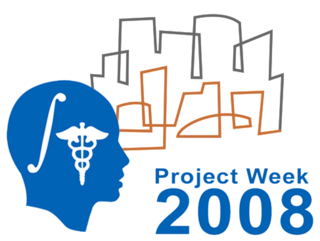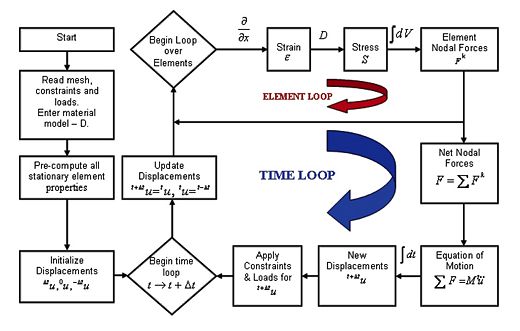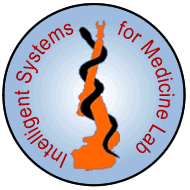Difference between revisions of "NA-MIC/Projects/Collaboration/UWA-Perth"
Grandjoldes (talk | contribs) |
|||
| Line 44: | Line 44: | ||
<h1>At the Project Week</h1> | <h1>At the Project Week</h1> | ||
*Learned from Jim Miller about possible solutions for linking our Finite Element (FE) solver for computing soft organ deformations with Slicer. No decision regarding selection of such solution has been made. | *Learned from Jim Miller about possible solutions for linking our Finite Element (FE) solver for computing soft organ deformations with Slicer. No decision regarding selection of such solution has been made. | ||
| − | *Talked with other groups (from the College of William & Mary, Laboratory of Neuro Imaging at UCLA, and the University of Iowa) applying FE analysis in computing soft organ deformations for image registration | + | *Talked with other groups (from the College of William & Mary, Laboratory of Neuro Imaging at UCLA, and the University of Iowa) about applying the FE analysis in computing soft organ deformations for image registration. |
*Learned from Vincent Magnotta about the hexahedral mesh generator developed at the University of Iowa. | *Learned from Vincent Magnotta about the hexahedral mesh generator developed at the University of Iowa. | ||
*Attended the ITK and Non-rigid Registration topic break-outs. | *Attended the ITK and Non-rigid Registration topic break-outs. | ||
Revision as of 12:54, 27 June 2008
Home < NA-MIC < Projects < Collaboration < UWA-Perth Return to Project Week Main Page |
Key Investigators
- Prof. Karol Miller (kmiller at mech.uwa.edu.au) Lab Webpages, Dr Adam Wittek, Grand Joldes from UWA, Will, Jim, Steve from NAMIC
Objective
The Intelligent Systems of Medicine Laboratory (ISML) mission is to work towards improving clinical outcomes through appropriate use of technology. We are interested in biomechanics (both engineering biomechanics and sport biomechanics), biomedical engineering, computer integrated surgery, medical robotics and related fields. We run exciting research projects in these areas, generously funded by The Australian Research Council and other agencies (including NIH).
Detailed information about the ISML can be found here [1]
Approach, Plan
We intend to contribute to Na-MIC by providing algorithms for computing the intra-operative brain deformations for image-guided neurosurgery. We treat the brain shift as a continuum mechanics problem involving finite deformations and solve it using non-linear finite element procedures. We use procedures (non-linear explicit dynamics with Total Lagrangian formulation) that do not require solving large systems of equations and are therefore amenable to computing the intra-operative brain deformations in real time (under 150 s) on a standard PC. See also [2]
Progress
The algorithms are already implemented in C/C++ using Visual Studio and MFC. Matlab is used for visualizing the results.
At the Project Week
- Learned from Jim Miller about possible solutions for linking our Finite Element (FE) solver for computing soft organ deformations with Slicer. No decision regarding selection of such solution has been made.
- Talked with other groups (from the College of William & Mary, Laboratory of Neuro Imaging at UCLA, and the University of Iowa) about applying the FE analysis in computing soft organ deformations for image registration.
- Learned from Vincent Magnotta about the hexahedral mesh generator developed at the University of Iowa.
- Attended the ITK and Non-rigid Registration topic break-outs.
References
- For complete list of our publication visit here [3]
- [1] Miller, K., Joldes, G., Lance, D., Wittek, A. (2007) Total Lagrangian explicit dynamics finite element algorithm for computing soft tissue deformation, Communications in Numerical Methods in Engineering. Vol. 23, pp. 121-134, doi: 10.1002/cnm.887, available on-line [4].
- [2] Wittek, A., Miller, K., Kikinis, R., Warfield, S. K. (2007) Patient-specific model of brain deformation: Application to medical image registration. Journal of Biomechanics. Vol. 40, pp. 919-929, DOI:10.1016/j.jbiomech.2006.02.021, available on-line [5].
- [3] Joldes, G. R., Wittek, A., Miller, K. (2007) Suite of finite element algorithms for accurate computation of soft tissue deformation for surgical simulation, in Proceedings of Computational Biomechanics for Medicine Workshop, International Conference on Medical Image Computing and Computer-Assisted Intervention MICCAI 2007, Brisbane, Australia, ISBN 13: 978 0 643 09517 5, pp. 65-73.
- [4] Hawkins, T., Wittek, A. and Miller, K. (2006) Comparison of constitutive models of brain tissue for non-rigid image registration, in CD Proceedings of 2nd Workshop on Computer Assisted Diagnosis and Surgery, Santiago, Chile, 4 pages.
- [5] Horton, A., Wittek, A. and K. Miller (2006) Computer simulation of brain shift using an element free Galerkin method, in CD Proceedings of 7th International Symposium on Computer Methods in Biomechanics and Biomedical Engineering CMBBE 2006, Antibes, France, ISBN: 0-9549670-2-X, pp. 906-911.
- [6] Horton, A., Wittek, A. and K. Miller (2006) Towards meshless methods for surgery simulation. Linear versus non-linear computation of the brain shift, in Proceedings of Computational Biomechanics for Medicine Workshop, International Conference on Medical Image Computing and Computer-Assisted Intervention MICCAI 2006, Copenhagen, Denmark, ISBN 10: 87-7611-149-0, pp. 32-40, available on-line [6].
- [7] Joldes, G., Wittek, A. and Miller, K. (2006) Improved linear tetrahedral element for surgery simulation, in Proceedings of Computational Biomechanics for Medicine Workshop, International Conference on Medical Image Computing and Computer-Assisted Intervention MICCAI 2006, Copenhagen, Denmark, ISBN 10: 87-7611-149-0, pp. 52-63, available on-line [7].
- [8] Joldes, G., Wittek, A. and Miller, K. (2006) Towards non-linear finite element, computations in real time, in CD Proceedings of 7th International Symposium on Computer Methods in Biomechanics and Biomedical Engineering CMBBE 2006, Antibes, France, ISBN: 0-9549670-2-X, pp. 894-899.
- [9] Miller, K., Joldes, G. and Wittek, A. (2006) New finite element algorithm for surgical simulation, in CD Proceedings of 2nd Workshop on Computer Assisted Diagnosis and Surgery, Santiago, Chile, 4 pages
- [10] Miller, K. Hawkins, T. and Wittek, A. (2006) Linear versus non-linear computation of the brain shift, in CD Proceedings of the 7th International Symposium on Computer Methods in Biomechanics and Biomedical Engineering CMBBE 2006, Antibes, France, ISBN: 0-9549670-2-X, pp. 888-893.
- [11] Miller, K. and Wittek, A. (2006) Neuroimage registration as displacement - zero traction problem of solid mechanics, Lead Lecture in Proceedings of Computational Biomechanics for Medicine Workshop, International Conference on Medical Image Computing and Computer-Assisted Intervention MICCAI 2006, Copenhagen, Denmark, ISBN 10: 87-7611-149-0, pp. 1-12, available on-line [8].
- [12] Wittek, A., Kikinis, K., Warfield, S. K., and Miller, K. (2005) Brain shift computation using a fully nonlinear biomechanical model, in Proceedings of 8th International Conference on Medical Image Computing and Computer Assisted Intervention MICCAI 2005 in Lecture Notes in Computer Science 3750 2006, pp. 583-590.
In Press
- [13] Wittek, A., T. Hawkins, and Miller, K. (2008). On the unimportance of constitutive models in computing brain deformation for image-guided surgery (in press). Biomechanics and Modeling in Mechanobiology: 8 pages, doi: 10.1007/s10237-008-0118-1, Springer.
- [14] Grand Joldes, Karol Miller and Adam Wittek (2007) Efficient hourglass control implementation for an uniform strain hexahedra using Total Lagrangian formulation. Communications in Numerical Methods in Engineering (accepted in June 2007), 9 pages, doi: 10.1002/cnm.1034, Wiley.

